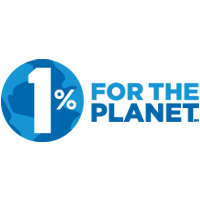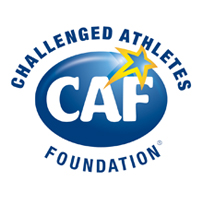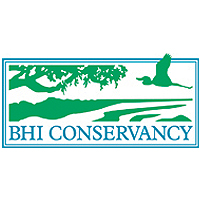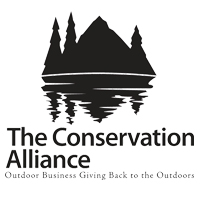The Dangers of Hot Weather Running
Dehydration, Heat Cramps, Heat Exhaustion, Heatstroke and Hyponatremia
Originally published by Road Runner Sports
Running in hot weather can pose dangers to runners. Particularly dangerous is racing in hot, humid summer conditions. Here’s how to protect yourself from these five serious (and potentially fatal) conditions.
Dehydration
Dehydration is not limited only to the summer months, although it’s probably more likely to occur during that time. Many physicians believe that most people are in a constant state of dehydration. Since coffee, tea, soda and alcohol act as a diuretic, anyone who drinks these fluids on a daily basis, and doesn’t drink at least an equal amount of water, will probably be dehydrated. If the person is physically active, the potential for dehydration is even greater.
Working out in hot, humid conditions promotes sweating, which in turn can cause dehydration. Sweating is good for you because it cools your body, but when you lose too much water you become dehydrated. If you’re already slightly dehydrated, sweating will only make it worse. It’s important to maintain an adequate fluid intake all the time. Don’t expect that you can make up for several days of not drinking enough by downing two cups of sports drink before your next long run or race. It’s important to keep hydrated all the time. Once you start to feel thirsty, it’s too late.
The average (sedentary) person needs a minimum of eight 8-ounce glasses of fluid a day. Runners need more: anywhere from four to eight quarts of fluid. That translates to at least sixteen 8-ounce glasses daily. Remember that diuretics don’t count! Drink water and sports drinks, and if you don’t have to worry about calories, fruit drinks or juice.
Two hours before your daily summer workout or a race, you should drink 16 ounces of fluid. Then ten minutes or so before you start to run, drink another one or two cups of water or sports drink. Drinking early and drinking often is the key. During a race you should drink six to twelve ounces of fluid every 15-20 minutes. If the weather is very hot, you may need to drink even more. Training in warm weather, you should drink at least every 35 to 40 minutes. (Remember you will have already had two 8-ounce glasses before you started.) If you’re running a race shorter than 30 minutes, you probably won’t need any water other than what you drank before the start. The same goes for the last few miles of a longer race. If you’re racing or training for longer than an hour, drink sports drinks as opposed to strictly water.
Start drinking immediately after finishing a run, no matter if it was a race or a workout. Minimum is 16 ounces for every 30 minutes you ran. If you tend to sweat a lot, you’ll need more. Weigh yourself after you’ve run. Drink at least 16 ounces of fluid for every pound you lose through sweating.
By monitoring the color of your urine you can tell if you’re hydrated. It should be pale yellow or even clear. If it isn’t, you need to drink more fluids. It’s important that you retain the fluid, so be careful it you’re urinating every fifteen or twenty minutes. To restore your fluid balance, eat something salty (a bag of pretzels, salted nuts, crackers or potato chips), then drink a sports drink. The salt will make you thirstier, so you’ll take in even more fluid and urine production will decrease.
Heat Cramps
Have you ever seen a runner bent over at the side of the road massaging their calves during a race? Chances are that he or she had heat cramps. Heat cramps are very painful (envision someone stabbing a knife deep into your muscles!) and rarely “work themselves out”. The cramps occur because you’ve lost minerals through sweating and dehydration. Once you’ve reached the point of heat cramps, it’s too late to try to replace fluids on the run. To make the cramps go away you should:
- Stop running
- Drink fluids immediately. The fluids should include sports drinks as well as water
- Massage the muscles once the pain begins to subside
- Cool your body with wet towels
- Get out of the sun
Heat Exhaustion
Heat exhaustion is a very serious condition that can lead to heatstroke. The symptoms of heat exhaustion are:
- Dizziness
- “Goose bumps” (particularly on the torso and arms)
- Nausea (sometimes accompanied by vomiting)
- Moderate to severe headache
- Weak legs
- Lack of coordination
- Rapid pulse
- Heavy sweating often accompanied by moist and cold skin
- Muscle cramping
If you experience any of these symptoms you must:
- Stop running immediately
- Get medical attention
- Drink large amounts of fluids, including sports drinks
- Get out of the sun
- Lie down and elevate your feet above your heart
- Loosen your clothing
Heatstroke
Heatstroke can be fatal. Unfortunately runners will sometimes ignore the symptoms of heat exhaustion (particularly in races longer than 10K) and will continue to push themselves until they’re nearing a total thermoregulatory breakdown. The symptoms of heatstroke are very similar to those of heat exhaustion, but rapidly progress to:
- Disorientation
- Weakness in the legs to the point that the runner may fall
- Strange behavior (including flailing with the arms and shoving)
- “Fuzzy” thinking
- Rapid pulse
- Cessation of sweating and hot/dry skin
- Body temperature that may reach 104 degrees or higher
- Lack of consciousness
- Convulsions or seizures
- Coma
Someone suffering from heatstroke needs immediate medical attention. They should be moved out of the sun, cooled by either rubbing their body with ice or immersing them in cold water and given fluids intravenously.
Hyponatremia
Within the last few years the condition known as hyponatremia has begun to attract the attention of sports medicine physicians, exercise physiologists, and the medical directors at some of the larger marathons around the country. Hyponatremia has been called water intoxication because of the symptoms it produces. According to Dr. Tim Noakes, Professor of Exercise & Sports Science Director at the University of Cape Town, “…a person with hyponatremia looks like he or she is mildly drunk. They can’t concentrate normally…they forget what you were talking about and start to concentrate elsewhere.”
Hyponatremia occurs when the body becomes dangerously low in sodium. It’s caused when you literally take in too much water. Although scientists have known about it for a long time, it has only been in the last few years as more runners have been competing in marathons that it has become a concern. According to Dr. Noakes, fluid has to be ingested at high levels for several hours for hyponatremia to occur. He suggests that a runner would have to be drinking water regularly for at least four to six hours to develop the condition. So runners taking four to six hours or more to run a marathon are at particular risk.
Unfortunately, symptoms of hyponatremia tend to mimic those of severe dehydration and/or heat exhaustion. By giving the athlete more water to drink the hyponatremia becomes worse, as more and more sodium is flushed out of the system. If a runner with hyponatremia is given fluids intravenously, they can suffer a fatal reaction. Dr. Noakes and other sports medicine professionals recommend that physicians and other medical personnel at road races be alert for the signs of hyponatremia. One of the earliest symptoms is a craving for salty food.
Although hyponatremia is rare, it’s wise to be aware that it can occur, particularly if you’re running a marathon in unusually hot weather. Hyponatremia serves as a reminder that water is good, but don’t forget sports drinks, which replenish your body with the sodium, potassium and other trace minerals you lose through sweat. It’s worth repeating: if you’re going to be running (or racing) for longer than an hour, you should be drinking a sports drink as well as water.
About the author:
Claudia Piepenburg has been running for 21 years and is the current editor for Peak Run Performance. She holds or has held state age-group records in Michigan, North Carolina, Florida, Tennessee and Virginia. In 1990, she was ranked 18th fastest masters woman in the world and 8th fastest masters woman in the U.S. in 1990 and 1991. She competed in the 1988 Olympic Marathon Trials, was 20th woman overall in the 1987 Boston Marathon and women’s winner of the 1986 Virginia Beach Marathon.
Super Dave’s Hot Weather Racing Tips
- Ditch the cotton T-shirt. You’ve heard this countless times before but it still blows me away to see you running in cotton t-shirts. If you have to, wear them during training. When race day comes around, you want every performance edge you can get. Cotton is hot and gets heavy with sweat, both of which will slow you down. CoolMax“ on the other hand is lightweight all the time and breathes.
- Wear Sunscreen. The sun sucks energy out of you especially if it is given the chance to burn you. The best sunscreen I have ever used (It holds up for 10+ hours in the heat of Kona at the Ironman) is Banana Boat Sport.
- Wear a coolmax hat – read #1 and #2 for reference.
- Go with a lighter weight sock. Your feet will swell more in the heat. A lighter weight sock will breathe better and allow for the swelling.
- Train in the heat. The best way to get used to racing in heat is training in heat. Make sure if you do this to pay attention to items 1 through 4 and stay hydrated.
- Drink at every aid station on the course. This way you maintain your hydration levels. At the end of the race if you feel hydrated enough, you can skip the last aid station. At the end of the race, if you are dehydrated, nothing can help you until you cross the finish line and stop your activity.
- Stay out of cold air-conditioned rooms. If at all possible, the day before and the morning of the race, stay out of cold rooms. The shock to the body from that really cold room to the really hot race will be less.
- Make sure you continue hydrating immediately after the event. Your body continues to sweat to stay cool long after you have finished. If you stop hydrating or worse yet, head to the beer tent, you will slow down your recovery dramatically.
- Wear the same coverage of clothing you do during training. There is nothing worse than wearing a different cut of shorts than you normally wear. The night after the race you notice that your skin that is not normally exposed to sun is not hot pink and stings. You look funny when you sit down in the nylon lawn chair that evening.
- If you are near a body of water at the finish, go stand waste deep in the water. The cooler water will help your legs recover. My favorite thing to do here in San Diego after a long hard run is to dip my legs into the cool 68-degree Pacific.










